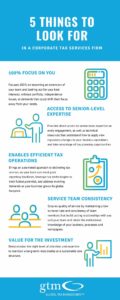Key Takeaways:
- Proactive overhaul of processes is essential: The evolving IRS requirements for R&D tax credits (Section 41) and capitalization rules (Section 174) necessitate a shift toward more detailed documentation and compliance practices to minimize audit risks and maximize credits.
- New documentation burden for Section 41: The redesigned Form 6765 requires more granular details, including business component data, officer wage inclusion, and acquisition/disposition information. IRS scrutiny has increased, making accurate and thorough reporting more critical than ever.
- Section 174 capitalization impacts financial planning: The new mandatory capitalization for R&D expenses creates complexities, impacting book-tax differences, deferred tax assets, and effective tax rates. Integration with R&D credit processes ensures consistent expense tracking and reduces audit risk.
- Automation and integration are key: To efficiently manage compliance, companies should prioritize automation tools and centralized data systems. Strong collaboration among tax, finance, and R&D teams is essential to optimize processes and ensure accurate, timely documentation.
The IRS’s evolving requirements for R&D tax credits (Section 41) and capitalization rules (Section 174) demand a proactive overhaul of traditional processes. Recent changes, including a new version of Form 6765 and proposed regulations for Section 174, as well as a handful of recent court decisions, necessitate a more detailed and structured documentation approach to combat the uptick in IRS exam activity. This provides a unique opportunity to get ahead of these compliance challenges, maximize credits, reduce risk, and modernize your processes.
Section 41: The New Documentation Requirements
We’ve discussed the Form 6765 changes and how they may provide an opportunity to reshape the R&D credit process. While historically the claims process was an exercise of reporting qualified research Expenses (“QREs”) and computing the credit, new sections (Sections E, F, and G) create an additional layer of complexity with updated qualitative data requirements. High-level, cost center-based QRE allocations are no longer going to cut it.
While Section G of the new form is optional for Tax Year 2024 reporting, all changes will be required for Tax Years 2025 and later.
The redesigned Form 6765 requires updated granular details, including:
- Questions related to the taxpayer’s controlled group
- Total number of business components
- Amount of officers’ wages included as QRE
- Information related to the business’s acquisitions/dispositions during the reporting period
- New categories of QRE previously not claimed
- Business component information identifying the name and type
- If the taxpayer used the ASC 730 directive to calculate any QREs
The IRS has become notably more aggressive in its R&D credit examination processes in the past year. Many of the questions included in Information Document Requests (“IDRs”) now directly mirror the data points featured on the newly proposed form. This trend signals a shift toward a more rigorous and detailed review of R&D tax credit claims.
Given this increased scrutiny, taxpayers need to be more proactive in ensuring that their filings are accurate, complete, and fully aligned with the updated requirements. The IRS is not only examining the quality of the data submitted but is also increasingly focused on how well the taxpayer’s reporting aligns with industry standards and regulatory expectations. Inaccuracies, inconsistencies, or failure to provide the required details can trigger further investigation and potentially lead to costly adjustments or penalties.
The ASC 730 Directive Advantage
Businesses using ASC 730 for financial reporting can align their tax documentation with existing GAAP processes. This streamlines compliance by leveraging already-tracked R&D costs, reducing duplication, and sidestepping the need to reclassify expenses by business component.
Eligible taxpayers who use the ASC 730 Directive may bypass a significant portion of the new qualitative reporting requirements in Section G of the revised Form 6765. While the IRS reserves the right to scrutinize the ASC 730 QREs, costs that are reconciled appropriately to the GAAP R&D amounts will be much easier to support on an exam.
Key Takeaway: Automation tools (e.g., Alteryx workflows, project management software, time-tracking systems) are critical to efficiently capture and categorize data at the source. Many of the software and technology packages already used by your company can often be repurposed for this exercise.
Section 174: Capitalization Complexities
Companies are begrudgingly getting used to the new reality of capitalizing IRC §174 expenditures. Guidance on the treatment of Specified Research or Experimental Expenditures (“SREs”) has been in a controversial state of uncertainty ever since the new capitalization requirements took effect.
Over the past few years, we’ve seen many discussions around a repeal or postponement of these changes. As recently as 2024, the Senate blocked the Tax Relief for American Families and Workers Act of 2024, which would have temporarily allowed for the retroactive repeal of mandatory capitalization for U.S.-based investments.
Concurrently, Treasury has provided a slow drip of interim guidance that has naturally led to more questions about what should be considered a SRE and general filing processes. Some of the key guidance to date includes:
- Revenue Procedure 2023-11 (January 2023)
- Allowed taxpayers to use automatic consent procedures for accounting method changes without filing Form 3115
- Applied a cut-off method, affecting only costs incurred after December 31, 2021
- Notice 2023-63 (September 2023)
- Provided interim guidance on capitalization rules, including treatment of software development and long-term contracts
- Taxpayers could rely on this guidance until final regulations were issued
- Notice 2024-12 (January 2024)
- Clarified and expanded upon Notice 2023-63, addressing issues like short tax years, contract research ambiguities, and interaction with other code sections
- Revenue Procedure 2024-34: (August 2024)
- Allowed additional flexibility for taxpayers with short taxable years in 2022 or 2023 to file automatic accounting method changes for SRE.
- Revenue Procedure 2025-8 (January 2025)
- Permitted successive automatic accounting method changes for tax years starting in 2022-2024, providing more adaptability as guidance evolves
The uncertainty surrounding compliance and potential legislative changes presents tax planning challenges. Capitalization creates book-tax differences, deferred tax assets, and potential increases in effective tax rates, which may require adjustments to financial planning. These factors also impact other tax calculations, such as interest expense limitations (Section 163(j)), FDII/GILTI regimes, and state tax reporting for non-conforming states. These complexities highlight the need for robust tracking systems, many of which can be integrated with your R&D tax credit process.
Why Integration Matters
Aligning Section 174 and Section 41 processes ensures consistency in expense tracking, minimizes audit risk, and simplifies compliance. For example, ASC 740 tax provision work can inform both capitalization and credit calculations.
Key Takeaway: Proactive modeling of cash tax impacts is essential. Even partial guidance requires revisiting prior-year filings and financial statements.
Here are some ways you can automate, document, and optimize your practices:
- Manual processes will struggle under the new regime: Prioritize centralized data systems to track R&D activities, costs, and business components in real time.
- Organize contemporaneous technical documentation (e.g., project notes, design requirements, specifications, test plans/scripts, re-design documents, meeting summaries, technical reports) to defend credit claims. Ensure that you can connect employees to technical activities, technical uncertainties faced, and a systematic process of experimentation.
- Foster critical collaboration among tax, finance, and R&D teams to ensure alignment.
Act now to avoid penalties and missed opportunities. The 2024 tax year marks a turning point. Companies that delay may risk:
- Increased audit exposure due to incomplete documentation.
- Lost tax savings from misaligned Section 41 and 174 processes.
- Operational inefficiencies as year-end scrambles intensify.
The IRS’s updated rules for Sections 174 and 41 are ushering in a new era of R&D tax compliance, requiring businesses to overhaul their documentation, adopt automation, and align tax and finance operations to mitigate risk and maximize credits. With increased audit scrutiny, a redesigned Form 6765, and ongoing capitalization complexities, companies must act now to modernize their approach. Reach out to GTM to discuss how these changes could impact your business and how to prepare effectively.



